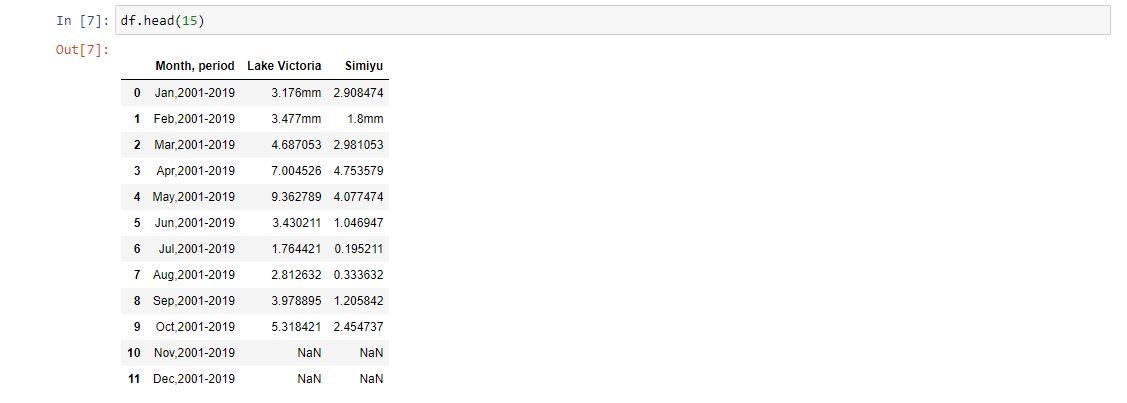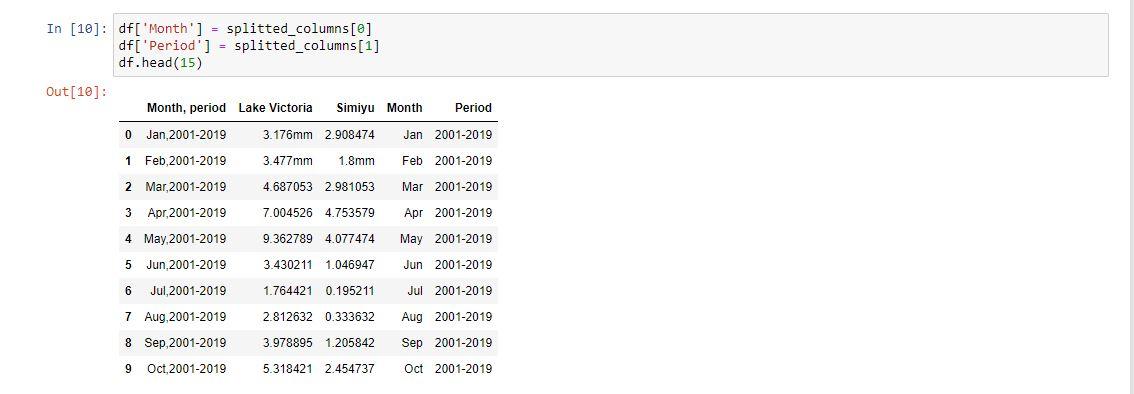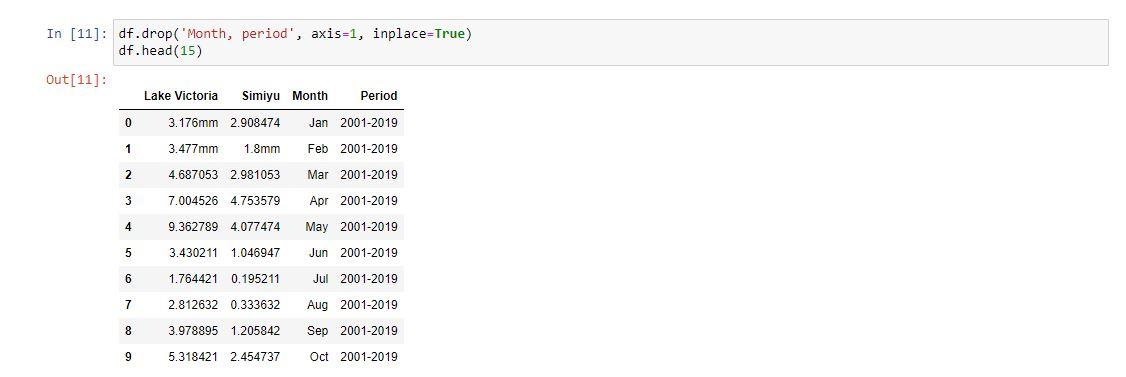Summary: Data cleaning in machine learning is crucial for refining raw data into reliable insights. It involves removing duplicates, handling missing values, and managing outliers to ensure data integrity. This process enhances model accuracy, streamlines decision-making, and optimises organisational performance.
Introduction
Data cleaning is a crucial step in machine learning, often overlooked but essential for accurate model predictions. This blog delves into the importance and process of data cleaning, aiming to provide a comprehensive understanding of transforming raw, messy data into clean, structured datasets ready for analysis.
By exploring the key characteristics of quality data, the various steps involved in data cleaning, and the tools available for this process, we aim to equip data scientists and machine learning practitioners with the knowledge needed to enhance their model’s accuracy and reliability.
Read Blog: Skills Required for Data Scientist: Your Ultimate Success Roadmap.
Defining Data Cleaning
Data cleaning is considered one of the most critical steps in machine learning. It is also called data scrubbing or cleansing and is part of the data preprocessing technique. Data preprocessing is a technique used to convert raw and unstructured data into clean and structured data.
Unstructured data consists of missing values, noisy data (meaningless data), outliers, etc., which affect the model’s accuracy and give incorrect predictions.
We get vast amounts of data from multiple resources. Most data scientists spend their time cleaning up data.
Assume you are a data scientist at Amazon and want to increase your company’s sales. You need to analyse your customers’ data. So, you have collected all your customers’ data. But what if the collected data is corrupted and irrelevant? Then, you might end up with a loss. So, data cleaning is an essential step that should be performed before training any machine learning model.
Characteristics Of Quality Data
Poor-quality data results in improper decision-making, inaccurate predictions, and reduced productivity. Therefore, data quality needs to be assessed to improve the performance of the ML model.
Utilising the effectiveness and the use of the data can tremendously increase the reliability and value of the brand. Hence, businesses have started to give more importance to data quality. Let’s discuss some of the characteristics of data quality.
Accuracy
Data accuracy ensures that the values stored for an object are correct and free from errors. Accurate data is essential for reliable analysis and decision-making. When data is accurate, it reflects the actual state of the object. It reduces the risk of making incorrect predictions and enhances the overall effectiveness of the ML model.
Consistency
Maintaining data consistency means ensuring uniformity across the dataset. Consistent data retains its quality and value even after importation and transformation processes. This uniformity is crucial for reliable analysis and helps prevent errors arising from data discrepancies. Consistent data supports smoother operations and better decision-making.
Unique Nature
Ensuring the unique nature of data involves collecting precise and accurate information to avoid inaccuracies and errors. Unique data maintains its integrity during manipulation and summarisation processes, preventing misinterpretations. This characteristic is vital for deriving accurate conclusions and making sound decisions based on the data.
Validity
Data validity refers to the accuracy and precision of the inferences drawn from the collected data. Valid data enables drawing appropriate and accurate conclusions that can be generalised to the broader population.
To have a legitimate data set, you must avoid the following:
- Insufficient data.
- Excessive data variance.
- Incorrect sample selection.
- Use of an improper measurement method for analysis.
Relevance & completeness
Data must be gathered to justify the effort involved, which means it must be done at the appropriate time. Data gathered too soon or late may be erroneous and lead to wrong conclusions. Completeness indicates whether the dataset contains relevant information on the organisation’s current and upcoming needs.
More To Read: Understanding Data Science and Data Analysis Life Cycle.
What Are The Data Cleaning Steps?
Understanding data cleaning steps is crucial for accurate analysis, ensuring data integrity, and enhancing the quality of insights derived. These steps lead to more reliable and actionable results in any data-driven field. Let us discuss the steps of data cleaning in detail!
Removal Of Unwanted Observations
The first and foremost step in data cleaning is to remove unnecessary, duplicate, or irrelevant observations from your dataset. We don’t want duplicate observations while training our model, as they give inaccurate results.
These observations occur when collecting and combining data from multiple resources, receiving data from clients or other departments, etc. Irrelevant Observations are not at all related to our problem statement.
For example, if you are building the model to predict only the price of the house, then you don’t require the observations of the people living there. So, removing these observations will increase your model’s accuracy.
Fixing Structural Errors
Structural errors have the same meaning but appear in different categories. Examples of these errors include typos (misspelt words), incorrect capitalisation, etc. These errors occur primarily with the categorical data.
For instance, “Capital” and “capital” have the same meaning but are recorded as two classes in the dataset. The other structural error examples are NaN and None values in the dataset. NaN and None represent the fact that specific features’ values are missing. These errors should be identified and replaced with the appropriate ones.
Managing Unwanted Outliers
An outlier is a value far from or irrelevant to our analysis. Depending on the model type, outliers can be problematic. For instance, linear regression models are less robust to outliers than decision tree models.
You will frequently encounter one-off observations that, at first glance, do not seem to suit the data you are examining. Removing the outlier will improve the performance of the data you are working with if you have an excellent cause to do so, such as incorrect data entry.
On the other hand, the appearance of an outlier can occasionally support a theory you’re working on. Considering this, an outlier does not necessarily indicate something is wrong. This step is required to evaluate the reliability. Consider deleting an outlier if it appears incorrect or irrelevant to the analysis.
Example of an outlier:
Suppose we have a set of numbers as
{3,4,7,12,20,25,95}
In the above set of numbers, 95 is considered the outlier because it is very far from other numbers in the given set.
Handling Missing data
We must recognise missing data, as most algorithms do not work well with missing values. Nan, None, or NA represent missing values. There are a few ways to handle missing values:
- Dropping Missing Values
- Imputing Missing Values
Dropping Missing Values
Dropping observations results in the loss of information; therefore, dropping missing values is not an ideal solution.
The absence of the value itself may have informational value. However, in the real world, it’s necessary to frequently predict solutions based on new data, even when some features are absent.
So, before dropping the values, be careful not to keep valuable information. This approach is used when the dataset is large and multiple values must be included.
Imputing Missing Values
Imputation is a method used to retain most of the data and information in a dataset by substituting missing data with another value. No matter how advanced your imputation process is, this might also result in losing information. Even if you develop an imputation model, you only enhance the patterns other features have already provided.
We have two different types of data: categorical and numerical data. Missing categorical data can mostly be handled using a central tendency measure mode. Missing numerical data can also be dealt with using central tendency measures, such as mean and median.
Handling Noisy Data
Handling noisy data in data cleaning involves smoothing out meaningless or erroneous data to improve analysis accuracy. Noisy data is meaningless data that machines can’t interpret. It can be generated due to faulty data collection, data entry errors, etc. It can be handled in the following ways :
- Binning Method: This method works on sorted data to smooth it. The whole data is divided into segments of equal size, and various methods are performed to complete the task. Each segment is handled separately. One can replace all data in a segment by its mean, or boundary values can be used to complete the task.
- Regression: Data can be made smooth by fitting it to a regression function. The regression may be linear (with one independent variable) or multiple (with multiple independent variables).
- Clustering: This approach groups similar data in a cluster. The outliers may be undetected, or they will fall outside the clusters.
Validate and QA
Validate and QA ensure data quality, meaningfulness, and alignment with analysis requirements, supporting reliable insights and accurate results. At the end of the data cleaning process, you must ensure that the following questions are answered:
- Does the data follow all the requirements for its field?
- Does the data appear to be meaningful?
- Does it support or contradict your working theory? Does it offer any new information/insights?
- Can you identify patterns in the data that will help you develop your next theory? If not, is there a problem with the quality of the data?
The above steps are considered the best practices for data cleaning. Although data cleaning is a very time-consuming process, it is still vital. Why? Let’s see why it is essential in machine learning or data science.
Check More: What is Data Scrubbing? Unfolding the Details.
Importance Of Data Cleaning
Data Cleansing plays a vital role in data science and machine learning. It is the initial step in data pre-processing. Data cleaning helps increase the model’s accuracy by dealing with missing values, irrelevant data, incomplete data, etc.
Almost all organisations depend on data, but only a few will successfully analyse data quality. Data cleaning helps reduce data errors and improves data quality. As we have seen in the above context, data cleaning handles missing, irrelevant, and noisy values.
Data Cleaning helps us consider the missing values and their impact on our model. It also helps achieve higher and better model accuracy and data consistency. For example, a company is shortlisting graduates for a particular job role.
However, the dataset contains one of the values for the feature age as 17, which is incorrect and impossible to correct. This makes visualisation easy, as the dataset becomes clear and meaningful after data cleansing.
Life Cycle Of ETL In Data Cleaning
Before diving into ETL, it’s crucial to grasp the concept of data warehouse. This repository is where data from various sources is stored and extracted to derive meaningful insights.
ETL, which stands for Extract, Transform, and Load, is the process that integrates data from multiple sources into a single source, typically a data warehouse.
The primary purpose of the ETL is to:
- Extract the data from the various systems.
- Transform the raw data into clean data to ensure data quality and consistency. This is the step where data cleaning is performed.
- Finally, load the cleaned data into the data warehouse or any other targeted database.
See More: Top ETL Tools: Unveiling the Best Solutions for Data Integration.
Tools & Techniques For Data Cleaning
Data cleaning tasks can be automated using various techniques, including free source and proprietary software. The tools typically have features for resolving data mistakes and problems, including combining duplicate entries, adding missing values, or replacing null ones. Many people also use data matching to locate duplicate or similar records.
Some numerous products and systems offer data cleaning tools that are mentioned below:
- Specialised data cleaning tools from vendors such as Data Ladder and WinPure.
- Data quality software from vendors such as Datactics, Experian, Innovative Systems, Melissa, Microsoft and Precisely.
- Data preparation tools are available from vendors such as Altair, DataRobot, Tableau, Tibco Software, and Trifacta.
- Customer and contact data management software from vendors such as Redpoint Global, RingLead, Synthio and Tye.
- Tools for cleansing data in Salesforce systems from vendors like Cloudingo and Plauti.
- Open source tools, such as DataCleaner and OpenRefine.
- Pandas is the best library or tool for data cleaning. It is very flexible and has different functions for cleaning data. We will see an example of how pandas are used in data cleaning.
Data Cleaning In ML Using Pandas
Pandas is a Python library primarily used for data cleaning and analysis in data science and machine learning. Let’s perform data cleaning using pandas.
Here, we use the dataset containing historical and projected rainfall and runoff for 4 Lake Victoria Sub-Regions. This dataset is provided by Open Africa and is released under the Creative Commons License.
The dataset has only 14 rows and 4 columns, but is messy. Therefore, it is more suitable for understanding data cleaning.
- Import the Pandas library.
- Download the dataset and import it into your code. Since the dataset is in Excel format, I’m using the read_excel() function.
- Print the first 5 rows of the dataset.
- Next, print the dimensions of the dataset to determine the number of rows and columns present.
- In the above output, we can see that the dataset is not loaded correctly. There are some irrelevant columns. So, just skip the last two rows and display the dataset.
- We can still see some additional columns. Those columns need to be removed.
- Now that we can see no irrelevant columns, we have to check whether the dataset has any missing values.
- We can see that there are missing values in the last two rows. Remove them.
- Split the column named Month and Period as two separate columns for a clear understanding.
- Add the above two columns with different names to the original data frame.
- Drop the feature named Month, period as it is not required.
- Some columns contain the string mm, so define a function which eliminates it.
- Now apply the previous function to the columns Lake Victoria and Simiyu:
- Next, describe the type of each column.
- The Lake Victoria and Simiyu columns should be float because they contain floating point numbers. To convert them to float:
We have dealt with the noisy, missing, and irrelevant data in the above code. Try using another uncleaned dataset and implementing data cleaning.
Read Blog: Ultimate Pandas Cheat Sheet: Mastering Pandas.
Benefits Of Data Cleaning
Data cleaning isn’t just about error correction; it’s a fundamental process that ensures data reliability, enhances decision-making, and optimises organisational performance. Businesses can leverage data as a strategic asset by investing in data cleaning practices, driving growth and competitive advantage.
Data cleaning serves crucial roles across various aspects of data management and analysis. Here are its key advantages:
- Enhanced Data Accuracy: data cleaning ensures that insights derived from the data are reliable and accurate by removing errors and inconsistencies. This accuracy is pivotal for making informed decisions.
- Streamlined Decision-Making: Cleaner data makes the decision-making process more efficient and straightforward. Organisations can rely on trustworthy information to drive strategic initiatives.
- Improved Model Performance: Clean data enhances models’ performance and predictive accuracy in data science and machine learning. This optimisation leads to more reliable outcomes and predictions.
- Boosted Productivity and Quality: Up-to-date and error-free data enables organisations to improve productivity and enhance employee work quality. This efficiency gains from streamlined operations driven by reliable data.
- Ensured Data Integrity and Consistency: Data cleaning promotes integrity and consistency throughout the data lifecycle. It ensures that data remains reliable and consistent across various applications and analyses.
Frequently Asked Questions
What is data cleaning in machine learning?
Data cleaning is identifying and rectifying errors and inconsistencies in raw data. It includes removing duplicates, handling missing values, and managing outliers. By cleaning data, machine learning models can produce more accurate and reliable predictions, ensuring the integrity of analytical insights.
Why is data cleaning important?
Data cleaning is vital because it ensures that the data used for analysis is accurate, consistent, and error-free. By removing noise and inconsistencies, data cleaning enhances the reliability of machine learning models, leading to better decision-making and more precise predictions in various applications.
What are the steps involved in data cleaning?
Data cleaning includes removing duplicate or irrelevant observations, fixing structural errors such as typos or missing values, managing outliers that can skew analysis, and validating data quality to ensure it meets analytical requirements. These steps collectively transform raw data into trustworthy information for machine learning models.
CONCLUSION
Data Cleaning is essential for any machine learning model. Even though it is time-consuming, it is necessary as it significantly impacts the accuracy of predictions, making your work more significant and impactful.
So, whenever you are working on an ML project, remember that data cleaning is not just a step but necessary for achieving relevant and accurate predictions.


















